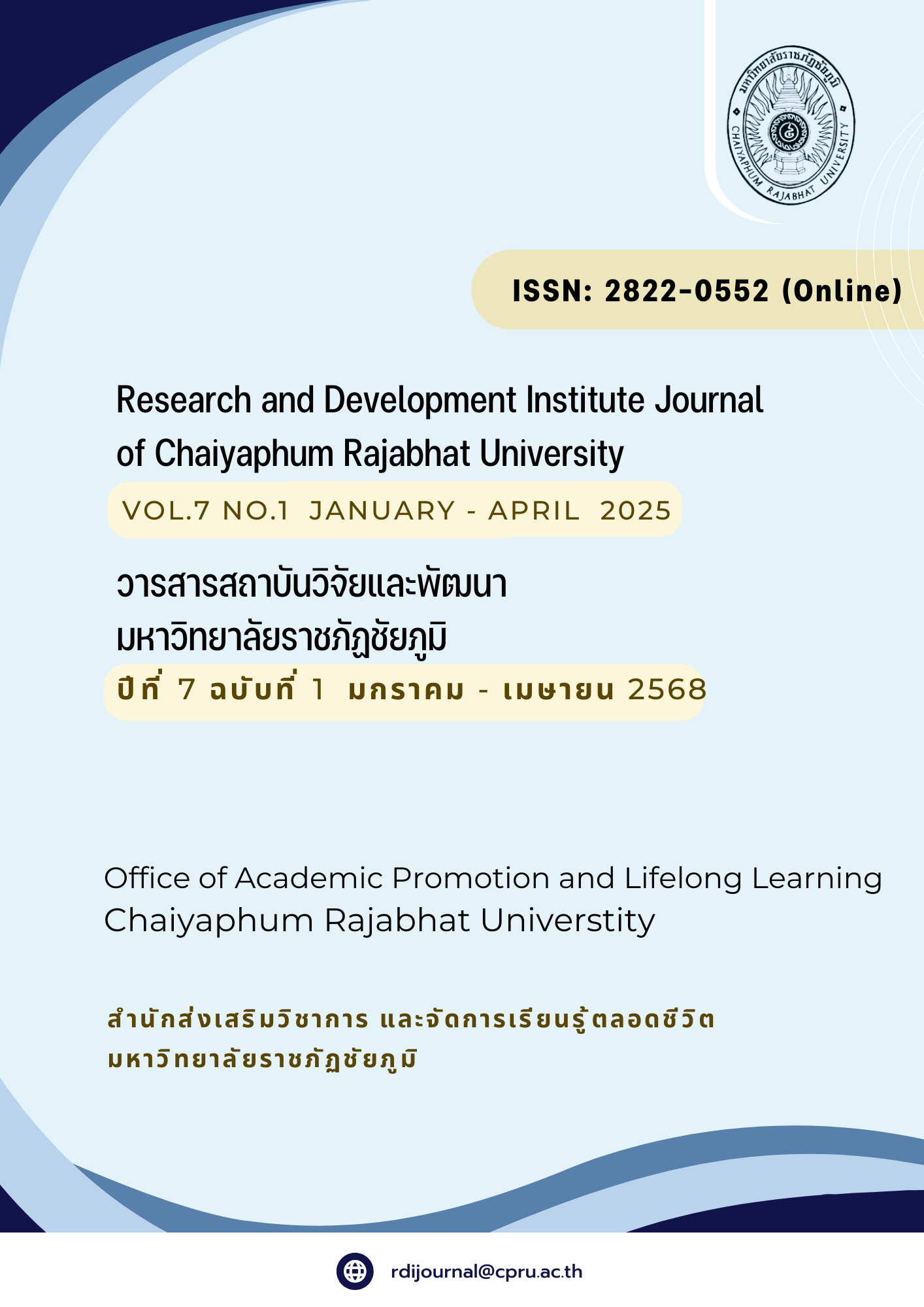ผลของการสอนแบบสมิทธิภาพด้วยการอ่านและการเล่าเรื่อง ที่มีต่อความสามารถในการพูดภาษาอังกฤษของนักเรียนชั้นประถมศึกษาปีที่ 5
Main Article Content
บทคัดย่อ
การวิจัยในครั้งนี้มีวัตถุประสงค์เพื่อ 1) ศึกษาผลของการสอนแบบสมิทธิภาพด้วยการอ่านและการ
เล่าเรื่องที่มีต่อความสามารถในการพูดภาษาอังกฤษของนักเรียนชั้นประถมศึกษาปีที่ 5 และ 2) เพื่อศึกษาความคิดเห็นของนักเรียนที่มีต่อการเรียนภาษาอังกฤษโดยใช้การสอนแบบสมิทธิภาพด้วยการอ่านและ
การเล่าเรื่อง กลุ่มตัวอย่าง คือ นักเรียนชั้นประถมศึกษาปีที่ 5 จำนวน 25 คน จากโรงเรียนระดับประถมศึกษาแห่งหนึ่งในอำเภอห้วยคต จังหวัดอุทัยธานี โดยใช้วิธีการสุ่มแบบแบ่งกลุ่ม เครื่องมือที่ใช้ในการวิจัย ได้แก่ แผนการสอน แบบทดสอบวัดความสามารถในการพูดภาษาอังกฤษ และแบบสอบถามความคิดเห็นของนักเรียน สถิติที่ใช้ในการวิเคราะห์ข้อมูล ได้แก่ ทดสอบการแจกแจงแบบปกติของคะแนนก่อนและหลังเรียนโดยใช้ K-S test จากนั้นวิเคราะห์ข้อมูลหาค่าเฉลี่ย ส่วนเบี่ยงเบนมาตรฐาน และใช้สถิติทีแบบไม่อิสระ
ผลการวิจัยพบว่า คะแนนเฉลี่ยความสามารถในการพูดภาษาอังกฤษ ของนักเรียนหลังเรียนด้วยการสอนแบบสมิทธิภาพด้วยการอ่านและการเล่าเรื่องสูงกว่าก่อนเรียนอย่างมีนัยสำคัญทางสถิติที่ระดับ .05 และนักเรียนมีความคิดเห็นที่ดีต่อการเรียนภาษาอังกฤษแบบสมิทธิภาพด้วยการอ่านและการเล่าเรื่อง แสดงให้เห็นว่าการเรียนภาษาอังกฤษแบบสมิทธิภาพด้วยการอ่านและการเล่าเรื่องสามารถพัฒนาการความสามารถในการพูดภาษาอังกฤษของนักเรียนชั้นประถมศึกษาปีที่ 5 ได้
Article Details

This work is licensed under a Creative Commons Attribution-NonCommercial-NoDerivatives 4.0 International License.
การอนุญาตให้ใช้ข้อความ เนื้อหา รูปภาพ ฯลฯ ของสิ่งพิมพ์ ผู้ใช้รายใดก็ตามที่จะอ่าน ดาวน์โหลด คัดลอก แจกจ่าย พิมพ์ ค้นหา หรือเชื่อมโยงไปยังข้อความทั้งหมดของบทความ รวบรวมข้อมูลสำหรับการจัดทำดัชนี ส่งต่อเป็นข้อมูลไปยังซอฟต์แวร์ หรือใช้เพื่อวัตถุประสงค์ทางกฎหมายอื่นใด แต่ห้ามนำไปใช้ในเชิงพาณิชย์หรือมีเจตนาเอื้อประโยชน์ทางธุรกิจใดๆ เผยแพร่ภายใต้สัญญาอนุญาตครีเอทีฟคอมมอนส์แบบแสดงที่มา-ไม่ใช้เพื่อการค้า (Creative Commons Attribution-NonCommercial-NoDerivatives 4.0 International License)

This work is licensed under a Creative Commons Attribution-NonCommercial-NoDerivatives 4.0 International License
References
Asher, J. (1968). The total physical response method for second language learning (Research Report). San Jose: San Jose State College.
Bulan, N., & Kasapoglu, K. (2021). An investigation of the effect of TPRS on vocabulary acquisition among third graders. Journal of Language and Linguistic Studies, 17(1), 645-662.
Crisianita, S., & Mandasari, B. (2022). The use of small-group discussion to improve Student’s speaking skills. Journal of English Language Teaching and Learning, 3(1), 61-66. https://doi.org/10.33365/jeltl.v3i1.1680
Eryilmaz, E. (2019). The impact of “Teaching proficiency through reading and storytelling” (TPRS) method on the anxiety levels of adolescent Turkish EFL learners. [Master’s thesis]. Uludag University.
Fagertun, C. (2020). Teaching English Vocabulary: A Case Study of TPRS and Reading Aloud as Teaching Methods in an Elementary School in Sweden.[Master’s thesis]. University of Gävle.
Hamilton, M. T., Prachanant, N., & Jarat, C. (2023). The English-speaking ability on ESA method of Thai students. Journal of Buddhist Studies Vanam Dongrak, 10(1), 193-204.
Krashen, S. & Terrell, T. (1983). Natural Approach. Pergamon.
Ministry of Education. (2017). Basic Education Core Curriculum BE 2551 (3rd ed.). Kurusapa Ladprao Publishing.
Nair, V., & Yunus, M. M. (2021). A systematic review of digital storytelling in improving speaking skills. Sustainability, 13(17), 9829. https://doi.org/10.3390/su13179829
New Haven Public Schools. (2014). Interpersonal Speaking Rubrics. https://sites.google.com/a/nhps.net/nhpswl/assessment
Nugraha, M. A. (2021). The use of Teaching Proficiency through Reading and Storytelling (TPRS) in teaching speaking skills. JEPAL (Journal of English Pedagogy and Applied Linguistics), 2(1),42-54. https://doi.org/10.32627/jepal.v2i1.58
Nunan, D. (1991). Research Methods in Language Learning. Cambridge University Press.
Printer, L. (2021) Student perceptions on the motivational pull of Teaching Proficiency through Reading and Storytelling (TPRS): a self-determination theory perspective. The Language Learning Journal, 49(3), 288-301. https://doi.org/10.1080/09571736.2019.1566397
Ponguagoon, P., & Lornklang, T. (2022). “The Use of Teaching Proficiency through Reading and Storytelling (TPRS) to Promote Vocabulary Learning Achievement of Fourth-Grade. Ratchaphruek Journal. 20(3), 89-100. https://doi.org/10.14456/rpjnrru.2022.22
Ray, B., & Seely, C. (2005). Fluency through TPR Storytelling: Achieving real language acquisition in school (4th ed.). Berkeley: Command Performance Language Institute.
Ray, B., & Seely, C. (2018). Fluency through TPR storytelling. Command Performance Language Institute.
Sasum, S., & Weeks, B. (2018). Why Some Thai Students Cannot Speak English Fluently?. In RSU International Research Conference 2018. (pp. 361-367). Thailand: Rangsit University.
Sawongta, W. (2017). Effects of Holistic Approach Using Local Cultural Content on English Oral Communication Ability of Sixth Grade Students in Phrae Province. [Doctoral dissertations]. Chulalongkorn University.
Yan, G., & Zhao, X. (2019). A review of the use of storytelling to improve students’ oral proficiency in EFL teaching. European Journal of English Language Teaching. 5(1), 44-62.
Zhang , X. ., & Sheng, Y. . (2024). Research on the impact of TPR teaching method on international children’s Chinese learning in a cross-cultural environment. Journal of Roi Kaensarn Academi, 9(2), 588–599.

